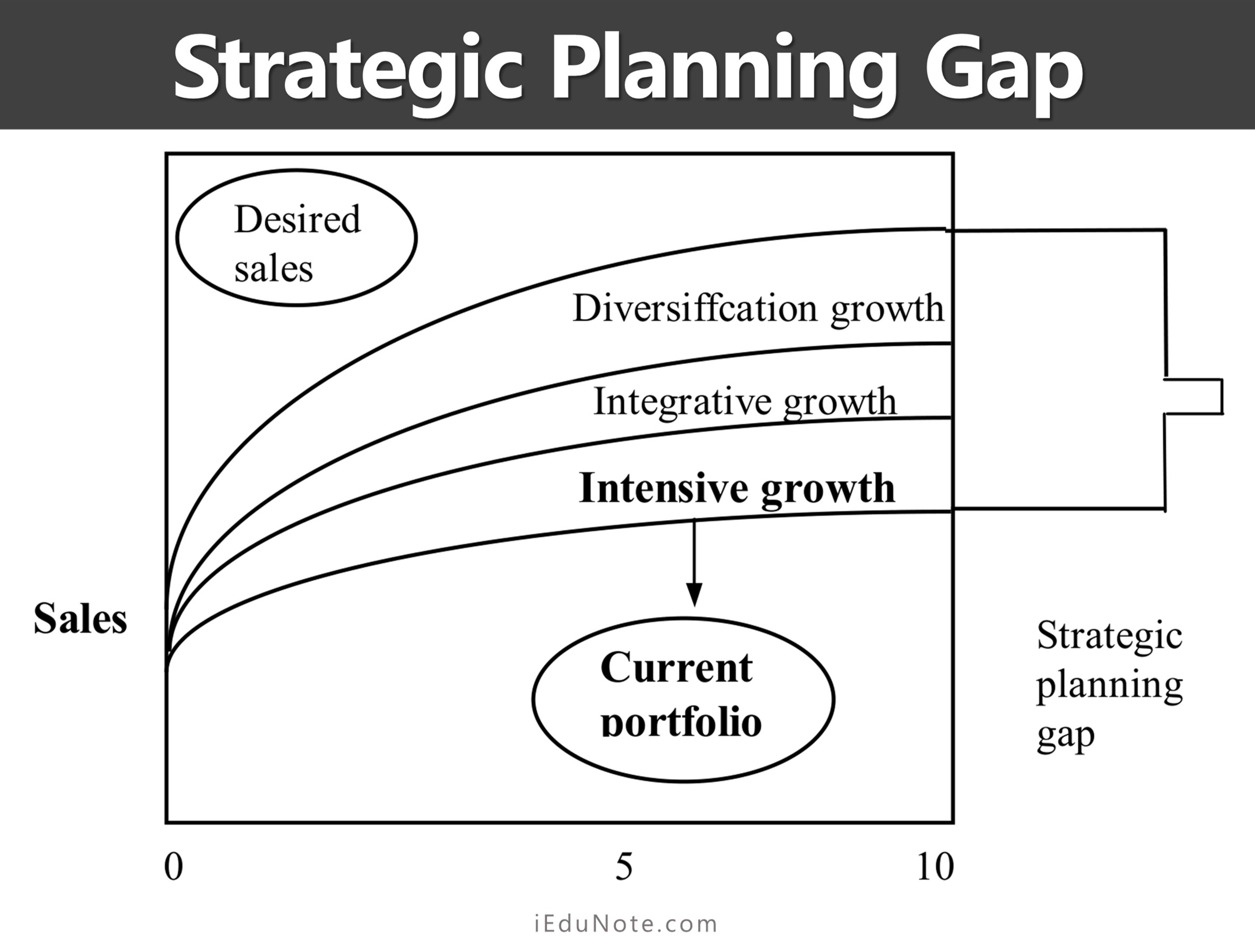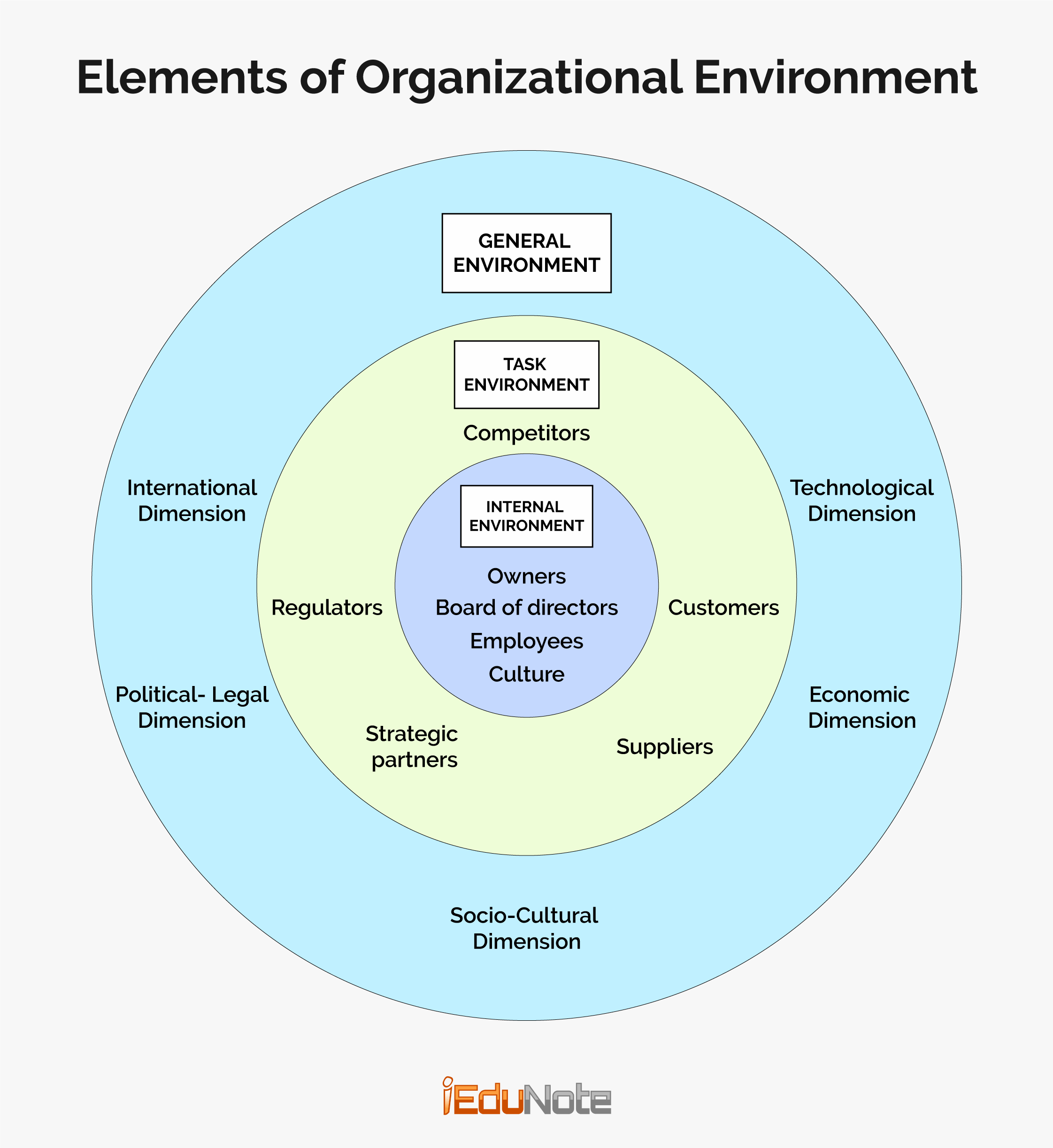A company can project total sales and profits through plans for existing businesses. The projected sales sometimes are less than what management desires. Management usually develops or acquires new businesses to fill up such a gap. This gap is usually arisen out of the strategic planning gap between future desired sales and projected sales.
How can a Company Fill the Strategic Planning Gap?
Strategic planning gap can be minimized by exploiting one of the three growth opportunities;
- Intensive Growth Opportunities: Identifying opportunities to achieve further growth within the companies current businesses.
- Integrative Growth Opportunities: Identifying opportunities to build or acquire businesses that are related to the company’s current businesses, and
- Diversification Growth Opportunities: Identify opportunities to add attractive businesses unrelated to the companies’ current businesses.

We shall now turn our attention to each of the growth opportunities mentioned above :
Intensive Growth Opportunities
Intensive growth opportunities are those present in the current product market. Management should first try to identify whether there are any opportunities in the company’s current product-market activities.
It should find out whether the existing products can be improved to provide more satisfaction to the existing customers. Three opportunities can exist in the current product market;
- market penetration;
- market development; and
- product development.
Market Penetration
In a market penetration strategy, a company attempts to fill an existing market’s needs with its present products. This type of strategy may use several approaches.
For example, a marketing manager may wish to increase the number of users in the present markets. The manager may believe that many potential users in the market still are not using the company’s products. The manager may also wish to increase the rate of use of the product by both present and potential users.
Besides, the manager also wants to prevent competitors from taking away present customers. With a market penetration strategy, the manager attempts to better serve a greater portion of a present market with existing products or services.
Market Development
A market development strategy occurs when the marketing manager attempts to find new markets for its existing products or services.
The manager hopes to find new uses and/or new customers in new markets for products that have already been developed and marketed elsewhere.
It is, of course, possible for any manager to employ a market penetration and a market development strategy at the same time since they involve the same products – only the markets are different.
Johnson and Johnson have successfully adopted the market development strategy by offering its baby products to the adult market.
Product Development
A product development strategy exists when the manager attempts to develop new or improved products for customers in its present markets. A number of approaches may be used here also.
For example, product improvement may be used where a new product actually replaces an existing company product that is slipping in the market. The new product may be cheaper or better serve the customer or both.
For example, a company may develop mini packs or family-sized packs of its products in addition to regular sizes.
At the other times, the manager may modify an existing product to make it more marketable. In other instances, the product line may be expanded to offer more choice or a wider variety to existing customers.
With this strategy, the manager wants to make a better impression in a present market through product changes and/or additions.
Integrative Growth Opportunities
Integrative growth opportunities are those present in the other parts of the core marketing system.
It makes sense for a company if the basic industry has a strong growth future and/or the company can increase its profitability, efficiency, or control by moving backward, forward, or horizontally within the industry. There could be three types of integration.
They are backward, forward, and horizontal integration. Let us now have a look at each of them;
Backward Integration
If a company seeks ownership or increased control of its supply system, it is called backward integration. A garment manufacturing company, for example, may exercise control over the suppliers of fabrics or own fabric manufacturing plants.
Forward Integration
If a company seeks ownership or increased control of its distribution system, it can be termed as forward integration. The same company may own transport facilities to distribute its product or exert control over the physical distribution firms to integrate forward.
Horizontal Integration
If a company seeks to own or exert control over some of its competitors, it can be called horizontal integration. The above-mentioned garment manufacturer may buy a few of its competitors, thus integrate horizontally.
Diversification Growth
Diversification growth opportunities are those present completely outside the core marketing system of the company. This type of growth opportunities makes sense for a company under the following situations:
- If the core marketing system does not show much additional opportunity for growth or profit;
- If the opportunities outside of the present core marketing system are superior.
A diversification strategy occurs when the marketing manager attempts to attract new groups of customers by moving into totally new markets.
This might involve taking a new product, which was developed for present markets to totally new markets. Or, it might involve developing new products for markets that the company did not previously serve.
With this approach, the manager hopes to move into markets heretofore not served with new products. There could be three broad types of diversification moves. They are:
Concentric Diversification
If a company seeks to add new products in its product line (s) with technological and/or marketing synergies with the existing product line/s, it is named concentric diversification.
New classes of customers are usually attracted to these products.
Horizontal Diversification
If a company seeks to add new products to its existing product line(s) that could appeal to its present customers, it is termed horizontal diversification.
The added products are technologically unrelated to their present product line.
Conglomerate Diversification
If a company plans to add new products into the existing product line (s) for new customers, it is called conglomerate diversification.
The company makes such a decision because it promises to offset some deficiency or represent a great environmental opportunity. The added products have no relationship to the company’s current market, products, or technology.
Major Classes of Growth Opportunities | ||
| Intensive Growth | Integrative Growth | Diversification Growth |
| Market Penetration | Backward Integration | Concentric Diversification |
| Market Development | Forward Integration | Horizontal Diversification |
| Product Development | Horizontal Integration | Conglomerate Diversification |

